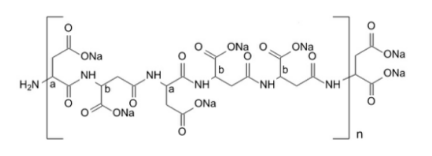
News
Dec . 05, 2024 03:07 Back to list
Exploring the Role of Iron Chelators in Treating Iron Overload Disorders
The Role of Iron Chelators in Medicine and Agriculture
Iron is an essential element for nearly all living organisms. It plays a critical role in various biological processes, including oxygen transport, DNA synthesis, and electron transfer. However, while iron is necessary for health, excessive levels can lead to toxicity and contribute to various diseases. This is where iron chelators come into play—compounds that bind to iron and facilitate its removal from the body or from various biological systems.
Understanding Iron Chelation
Iron chelation refers to the process of binding iron ions to chelating agents—molecules that can form multiple bonds with a single metal ion. Iron chelators are particularly useful in treating iron overload conditions, such as hemochromatosis and thalassemia, where excess iron accumulates in the body, potentially causing severe damage to organs such as the liver, heart, and pancreas. The goal of treatment is to reduce iron levels to a safe range, thereby preventing the associated complications.
Types of Iron Chelators
Several iron chelators are currently available, each with unique properties and mechanisms of action. The most notable include
1. Deferoxamine (DFO) This is a classic iron chelator derived from the bacterium *Streptomyces pilosus*. It is administered through subcutaneous infusion and is effective in binding free iron in the bloodstream, promoting its excretion through urine. DFO is primarily used for patients with chronic iron overload, particularly those receiving repeated blood transfusions.
2. Deferasirox This is an oral chelator that has become increasingly popular due to its ease of administration. It works by binding to ferric iron and facilitating its excretion via the gastrointestinal tract. Deferasirox has been shown to be effective in reducing liver iron concentration in patients, making it a preferred choice for long-term management.
3. Deferiprone Another oral chelator, deferiprone is known for its ability to penetrate cells and bind intracellular iron. It is particularly effective in outpatient settings and can be used in combination with other chelators to enhance iron removal.
iron chelator

Applications in Medicine
The primary application of iron chelators is in the medical field, particularly in the management of iron overload disorders. Patients with conditions like thalassemia often require regular blood transfusions, which can lead to iron accumulation. Iron chelation therapy is critical in these cases, helping to prevent complications such as heart failure, diabetes, and liver disease.
Moreover, emerging research suggests that iron chelation therapy may have applications beyond managing iron overload. Studies have indicated that chelators might play a role in mitigating oxidative stress and inflammation, which are pivotal in the pathogenesis of various diseases, including neurodegenerative disorders and even cancer. However, more research is needed to fully understand these potential benefits and to evaluate the efficacy of chelators in these contexts.
Agricultural Perspectives
In addition to their medical uses, iron chelators are gaining attention in agriculture. Iron deficiency is a common problem in crops, leading to reduced yields and poor quality. The application of iron chelators in soil can enhance the availability of iron for plants, promoting healthier growth and improving yield. By preventing iron deficiency in crops, iron chelation can contribute to food security and sustainable agricultural practices.
Chelators can also be employed in the remediation of contaminated soils. They enhance the mobilization of heavy metals, allowing for the extraction of toxic compounds from the soil. This application highlights the versatility of iron chelators in both enhancing agricultural productivity and promoting environmental health.
Conclusion
Iron chelators are invaluable tools in both medicine and agriculture. Their ability to bind excess iron and facilitate its removal provides critical benefits in managing iron overload disorders, while their applications in crop production and soil remediation illustrate their broader significance. As research advances, the potential uses of iron chelators continue to expand, underscoring their importance in promoting health and sustainability. The future will undoubtedly see further innovations and applications of iron chelation strategies, making this field a promising area for ongoing exploration and development.
-
Polyaspartic Acid Salts in Agricultural Fertilizers: A Sustainable Solution
NewsJul.21,2025
-
OEM Chelating Agent Preservative Supplier & Manufacturer High-Quality Customized Solutions
NewsJul.08,2025
-
OEM Potassium Chelating Agent Manufacturer - Custom Potassium Oxalate & Citrate Solutions
NewsJul.08,2025
-
OEM Pentasodium DTPA Chelating Agent Supplier & Manufacturer High Purity & Cost-Effective Solutions
NewsJul.08,2025
-
High-Efficiency Chelated Trace Elements Fertilizer Bulk Supplier & Manufacturer Quotes
NewsJul.07,2025
-
High Quality K Formation for a Chelating Agent – Reliable Manufacturer & Supplier
NewsJul.07,2025
